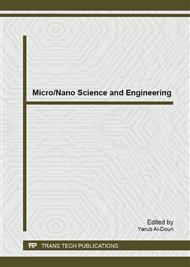p.651
p.656
p.661
p.669
p.674
p.679
p.684
p.689
p.694
The Measurements of Uranium Concentration in Human Blood in Selected Regions in Iraq Using CR-39 Track Detector
Abstract:
The technique of fission track has been applied to determine the concentration of uranium in blood samples for people, male and female of Basrah city (south of Iraq), using CR-39 track detector. During the Gulf Wars I and II in 1991 and 2003 respectively, this city became a place of military operations. The measurements were done for samples of human blood for people to study the impact of exposure in this city as compared to results from Babylon city (central Iraq); the latter is far from exposure locations. The results showed that the uranium concentrations in human blood of people in Basrah city ranged from 0.83 ppb to 2.47 while for people in Babylon city, the uranium concentration ranged from 0.3 ppb to 1.59 ppb. It has also been found that the uranium concentration in human blood samples of people in Basrah city is higher than those of people in Babylon city. Results showed statistically significant differences in the uranium concentration in the residential area.
Info:
Periodical:
Pages:
679-683
Citation:
Online since:
April 2014
Authors:
Keywords:
Price:
Сopyright:
© 2014 Trans Tech Publications Ltd. All Rights Reserved
Share:
Citation:


